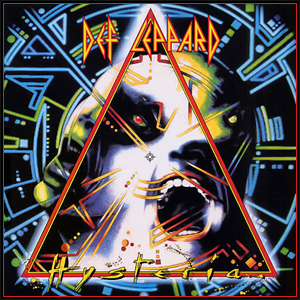
10) Def Leppard - Hysteria (1987)
It was conceived as hard rock’s answer to Michael Jackson’s Thriller: an album where every track is a potential hit single. And so it proved.
Mutt Lange’s superb production and the Lep’s anthemic choruses were a winning combination. Six of Hysteria’s 12 tracks were top 20 US hits, with power ballad Love Bites reaching number one, and rap-rock hybrid Pour Some Sugar On Me (written specifically for strippers to disrobe to) hitting number two.
Released as the CD format was seriously taking hold, this hi-tech, crystal clear, hour-long epic catapulted Def Leppard into the stratosphere. With 25 million copies sold worldwide, it's the biggest album of Leppard’s career, and their most experimental.
“We wanted to push the envelope of what rock music was,” Elliott says. Rocket, with its extended Burundi-inspired drum breakdown, typified their anything-goes approach. And they did it all with a drummer who’d lost an arm. It’s nothing short of miraculous.
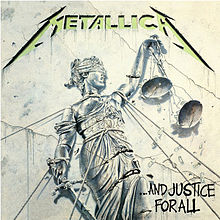
9) Metallica - …And Justice For All (1988)
Sometimes a breakthrough album becomes such a landmark that it gives an artist the freedom to subsequently do whatever they want. And equally, sometimes the logical next step is to make the follow-up to that breakthrough as similar as possible – a sequel that repeats the winning formula and cements their growing status with their core constituency of fans.
This was the position Metallica found themselves in when planning their fourth album, and it's fair to say they shunned the safe option entirely. ...Justice marked the point where the prog-metal streak that had been bubbling beneath the surface on Master Of Puppets rose to the surface. …Justice swung between the brutal and the complex, the slick and the indigestible. It was the most fascinating of their run of classic 1980s albums, but also the most flawed.
Those flaws aside, back in 1988 Justice was mostly greeted with enthusiasm by fans and critics, praised for the musicianship displayed in the labyrinthine song structures, the dizzying changes of Blackened and the title song a logical extension of earlier tracks like Master Of Puppets. And for disciples of the riff it’s hog heaven, each song a stream of memorable motifs.
The latest news, features and interviews direct to your inbox, from the global home of alternative music.
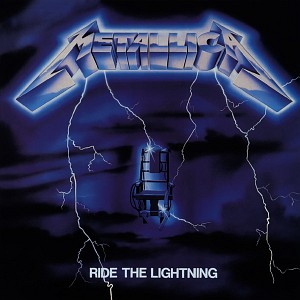
8) Metallica - Ride The Lighting (1984)
Metallica’s second album is, indisputably, a masterpiece. Has any metal band ever undertaken such a huge leap forward as Metallica did in the nine months between the release of Kill ‘Em All and the recording of Ride The Lightning?
In terms of songwriting, dynamics, musicianship and lyrical depth, Ride The Lightning is such a huge step on from the raw aggression of Kill ‘Em All, that it could be the work of a different band entirely. Which, in effect, it was: when Cliff Burton and Kirk Hammett joined the band on bass and lead guitar respectively, their debut album – save for Burton’s solo showcase Anaethesia (Pulling Teeth) – had already been written.
The serrated riffs underpinning Fight Fire With Fire and Ride The Lightning might have had their origins in Thrash metal, but here they were sharper, sleeker and more incisive than anything the band had previously recorded, while For Whom The Bell Tolls was a masterclass in control and dynamics, a tale of medieval conflict made all the more dramatic and affecting by its authors’ realisation that true ‘heaviness’ could be better attained by easing up on their traditional full-tilt tempos.
More than just the sound of a group of young musicians growing into their own skin, Ride The Lightning is a fearless declaration of independence from a band who were utterly determined to forge ahead on a path of entirely their own making. Three decades on, it stands as both a blueprint and a benchmark against which all forward-thinking metal bands shall inevitably be judged.
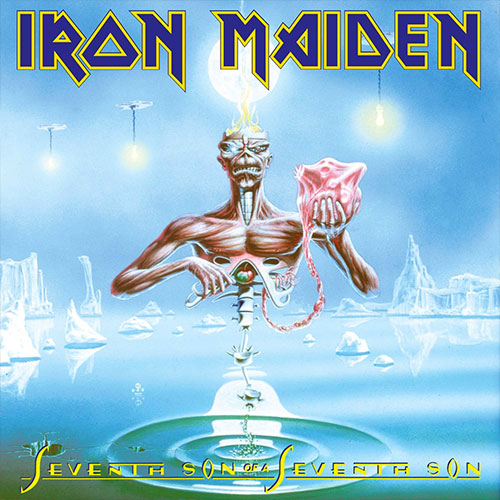
7) Iron Maiden - Seventh Son Of A Seventh Son (1988)
Maiden's seventh studio album is, frankly, a flawless masterpiece, and the icing on the cake of an eight-album run that has still yet to be bettered in heavy music history.
It starts with Moonchild – an onslaught of goosebumps, guaranteed – and continues through what now reads like a laundry list of platinum-plated Maiden classics, ranging from immaculate singles Can I Play With Madness and The Evil That Men Do through to the fervent proggery of the title track and The Prophecy’s otherworldly squall.
“It was a new challenge for us, making a concept album," Steve Harris told Metal Hammer in 2015. "I’ve always loved prog – Yes, Genesis, ELP – and this album’s title track was a powerful song with that prog element to it.
"Not everyone liked the album at the time. Bruce even said to me that Queensryche had made a better concept album that ours, with Operation: Mindcrime. I said, ‘That’s a really good album, but ours is a fucking great album!’ Not long after that, Bruce did a solo album. He was struggling within himself. We didn’t realise how much until later.”
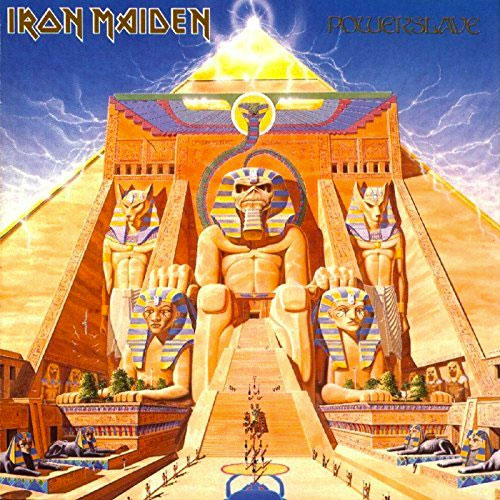
6) Iron Maiden - Powerslave (1984)
While Seventh Son... might be flawless, Powerslave is better than perfect. If that’s a thing (an inspection of the track-listing will add any necessary credence to this theory).
Singles Aces High and 2 Minutes To Midnight easily catered for those that liked their metal to be succinct and razor-sharp, while bassist Steve Harris’ almost 14-minute adaptation of Samuel Taylor Coleridge’s poem The Rime Of The Ancient Mariner sounded stunning in living rooms and on the concert stage.
The album that sent Maiden around the world on the legendary World Slavery tour, it turned them into global megastars in the process, it is both the definitive record of the band’s first decade and the album with the best artwork of all time.
“We recorded the album at Compass Point studios in Nassau," Adrian Smith told Metal Hammer in 2015. "And in those days, some of us were rather easily distracted. One night I was with Martin Birch, partying till three in the morning. The next day I turned up the studio, really hungover, and there’s Martin, still up from the night before, and beside him is Robert Palmer, who lived next door to the studio. I had to do my solo for the track Powerslave, and I had the shakes, but I just went, fuck it. I pulled off a solo and Robert Palmer was going, ‘That’s fucking great!’.”
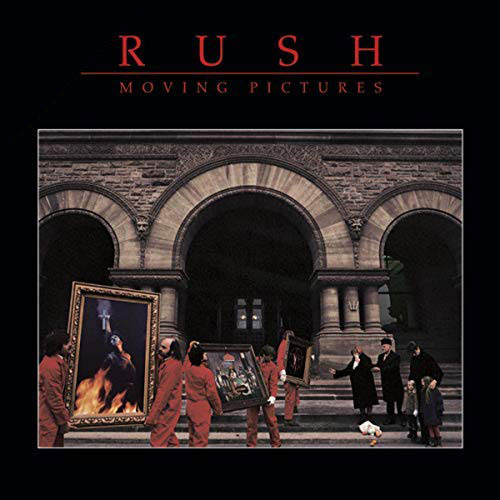
5) Rush - Moving Pictures (1981)
The killer–diller of Rush albums. No question. It sounds as fresh today as when, after five months of often fraught work, the band sat in a playback at Quebec’s Le Studios and declared it was finished.
A number-three album on both sides of the Atlantic, Moving Pictures bristles with hyper-commercial and left-field songwriting expertise, characterised by opening track Tom Sawyer. Side one of the original vinyl – also featuring Red Barchetta, the instrumental YYZ and Limelight – was faultless.
Flipping it over, we heard a newly matured Rush – each aged 27 or 28 at the time – rein in the epic The Camera Eye (inspired by John Dos Passos) to 11 exhilarating minutes, terrify us with Witch Hunt, then set our techno pulses racing with Vital Signs.
Some fans bemoaned Rush’s over-reliance on keyboards for the record, but the band were on irresistible form – and anyway, the 80s was a time when the boundaries between music and technology were blurring. Rush embraced both aspects in impeccable style. A band at the top of their game.
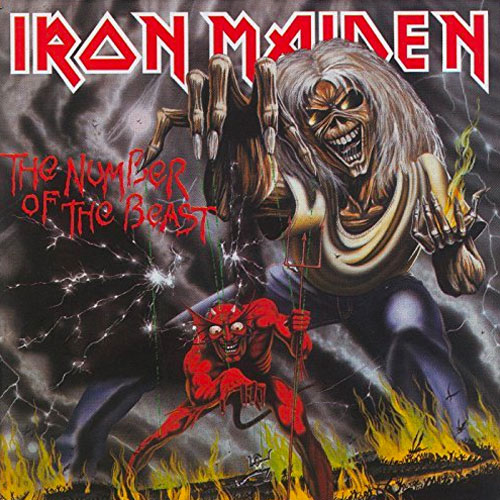
4) Iron Maiden - The Number Of The Beast (1982)
The unpredictable Paul Di’Anno jettisoned, and Iron Maiden came up with a near-definitive collection of songs. Bruce’s first album with Maiden is a wall-to-wall triumph.
Brilliantly produced and confidently played, The Number Of The Beast allowed them to make their leap into the big league. “We knew at the time that there was something right about what we were doing,” says then new-boy Dickinson. “The stars were aligned.”
Never mind the classic singles, listen to Children Of The Damned or Hallowed Be Thy Name or 22 Acacia Avenue and try not to feel instantly better about your life. Guaranteed to feature in every list of the greatest heavy metal albums ever made, and rightly so, The Number Of The Beast is 34 years old and still slams like a Muhammad Ali haymaker.
“I knew that I had joined a great band," said Dickinson. "I also knew I could make it even better. I had a vision for The Number Of The Beast: my voice glued on to Maiden equals something much bigger. We did it fast – four or five weeks. We’d be in the studio till five or six in the morning.
"The one mistake we made was putting Gangland on the album instead of Total Eclipse. We picked Gangland because it was the first thing we ever recorded together properly. But the rest of the album was fantastic. Hallowed Be Thy Name was a precursor to Rime Of The Ancient Mariner. That song, and the whole album, took Maiden to a different level."
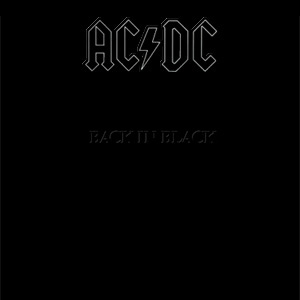
3) AC/DC - Back In Black (1980)
There was a powerful significance in that title, and that none-more-black cover. Angus described Back In Black as “our tribute to Bon”, but it became so much more than that. The biggest-selling album of AC/DC’s career, and the second-biggest-selling ever (after Michael Jackson’s Thriller) Back In Black is the mother of all comeback records and arguably the greatest hard rock album of all time.
The way the band tell it, it was the worst of times and it was the best of times. Bon’s death had shook them, but this new singer gelled instantly and the ideas came thick and fast. Recording in the Bahamas, and three songs in to the recording, newbie Brian Johnson worried that he was going to run out of lyrics. Looking for inspiration for Hells Bells, a tropical thunderstorm raged outside. “I said: ‘That’s rolling thunder, that’s what they call it in England’,” remembered Brian. Mutt Lange told him: “Rolling thunder? Write that down.” The rain fell. Brian noted, ‘Pourin’ rain!’ “And the wind whipped up – ‘I’m comin’ on like a hurricane!’ I was gone. The song was ready that night. I hadn’t even heard the track…” Similarly, his “southern preacher” spoken word intro to Rock And Roll Ain’t Noise Pollution was done off the cuff in one take: “I never ever thought that it was gonna be on the record,” said Brian.
Back In Black, Malcolm said later, was AC/DC remembering “the good times” they’d had with Bon. Have A Drink On Me had been recorded as a demo with Bon on drums. The lyrics (‘Whisky, gin and brandy/With a glass I’m pretty handy’) were a drunken toast from Brian to his predecessor. With You Shook Me All Night Long Brian proved he had as much of a way with a double-entendre as his predecessor: ‘She told me to come but I was already there.’
On previous album Highway To Hell, Mutt Lange had polished up the band’s sound and made them more commercial without losing their core identity. You Shook Me All Night Long perfectly illustrates Lange’s ability to bring an entirely acceptable pop sensibility to a hard rock band as he helps the band deliver a singalong, ‘arms around your best mate’s shoulder’ winner of a tune.
It has so many classic songs: Shoot To Thrill, What Do You Do For Money Honey(a song that dates from the Powerage sessions), and of course that genius title track, built on a juddering riff that sounds like the blues if it was deconstructed by Satan and then rebuilt by Tony Stark. Out of tragedy came AC/DC’s greatest triumph.
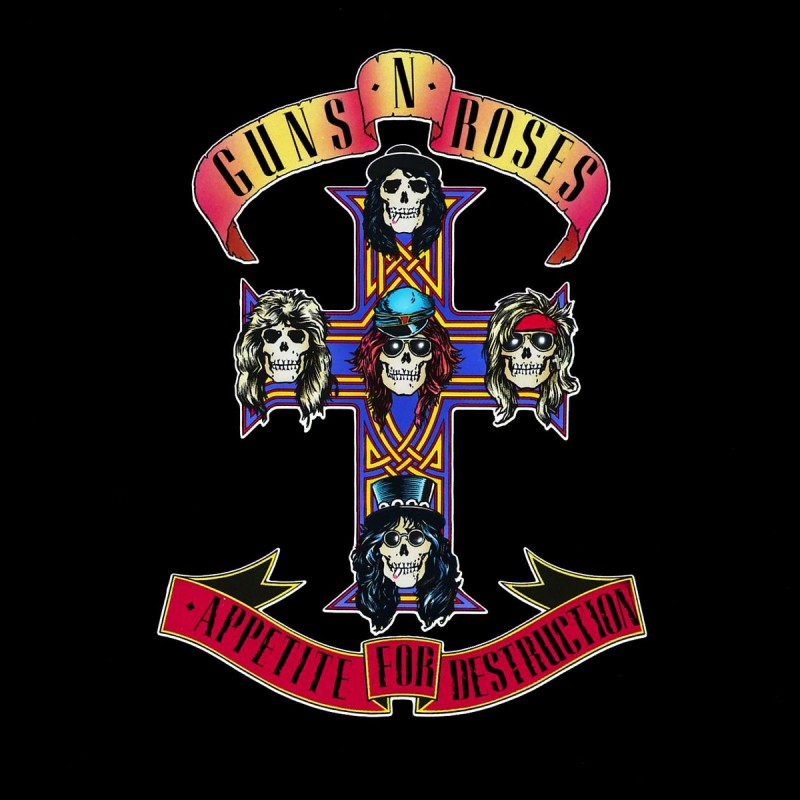
2) Guns N’ Roses - Appetite For Destruction (1987)
It’s damn near impossible to adequately explain the impact of GN’R’s studio debut. It was like nothing we’d heard before – the sound of a street smart LA gang with a tortured genius of a frontman and a brand new guitar hero with a penchant for top hats.
Appetite For Destruction is one of the greatest records of all time, and one of the biggest – the biggest-selling debut album, ever – with over 30 million sales worldwide. It revolutionised rock music in the late-80s and transformed Guns N’ Roses into superstars, its success all the more amazing given the chaos in which it was created.
Guns N’ Roses were so out of control, that the making of their debut album turned into a lengthy and expensive saga. In 1986, Arnold Stiefel’s brief tenure as GN’R manager ended after the band’s pre-recording sessions at a rented house on the former estate of Hollywood producer Cecil B DeMille resulted in a $22,000 bill for damage to the property.
But what this album captures is the elusive moment when a band gets to grow creatively and blossom into something irresistible and magical out of sight of the public eye and before an adoration that almost inevitably helps snuff out the creative flame that these embers can only start to hint at. From the ominous opening growl of Welcome To The Jungle to the relentless closer Rocket Queen, the songs snap and snarl, all strut and switchblade – and the template for a hundred awful West Hollywood bands that would follow after.
Appetite runs the gamut from heartfelt balladry (Sweet Child O’ Mine) to full-on anthems for a new rock world in Paradise City and Mr Brownstone. Frankly, we just didn’t know what hit us.
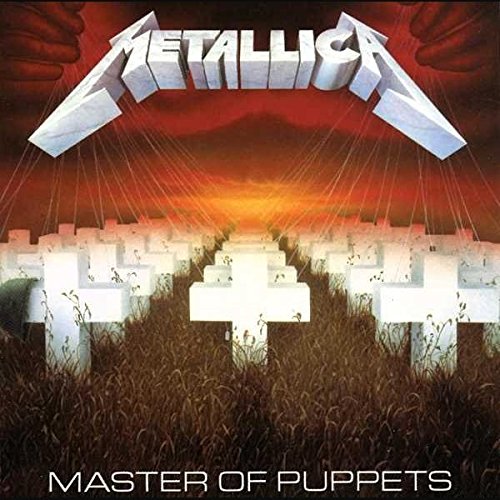
1) Metallica - Master Of Puppets (1986)
Over 30 years later, it’s still hard to overestimate the impact Metallica’s Master Of Puppets had on the world. Their most profound and emphatic musical statement, it would come to define them, and with the death of bass player Cliff Burton on that album’s tour, it book-ended an era for the quartet when they went from being celebrated as the most important metal band on the planet to being another infamous rock act forever marred by a gruesome fatality. To their credit, as a unit they managed to recover, renew and move on.
For those of us still marvelling at their unparalleled and sophisticated leap from the Kill ’Em All debut to their Ride The Lightning album, Master was a whole other level of erudition. Strange to think now that there was outrage in some quarters when they introduced acoustic guitars to the audience at Hammersmith Odeon (think Bob Dylan’s ‘Judas’ debacle when he went electric, but in reverse) on the Lightning tour. Though if their audience and critics were still clinging to the past, Metallica were marching purposefully forward to the beat of their own drum (toms and double bass drums, mostly), setting the spark to the flame of a genuine musical revolution.
The phrase “hypnotising power” is an entirely apposite description of the effect of the 54 minutes and 46 seconds of sound contained on Master Of Puppets. As enshrined in our culture as these songs have become, the impact of Battery, of the majestic, four movement Master Of Puppets, of the slow-burning Welcome Home (Sanitarium), the beautifully atmospheric, classically composed Orion and the punishing Damage, Inc. has not diminished one iota with the passing of time.
On an album conceived around themes of manipulation and control, Metallica’s mastery of the form is absolute and unerring, the performances a peerless harnessing of power, dynamics and mood. The first Metallica album entirely written by the four musicians who would record it, the songs on Master Of Puppets were assembled in the garage of 3132 Carlson Boulevard in the spring and summer of 1985 and presented to producer Flemming Rasmussen perfectly arranged in demo form before the quartet decamped to Sweet Silence studios in Copenhagen in late August to record it. Upon its release, UK music magazine Sounds hailed the set as nothing less than “a landmark in the history of recorded music.”
Though history will remember 1986 as the year thrash broke through into the mainstream metal consciousness – Master Of Puppets pushing a new breed of metal fans to seek out more extreme sounds, paving the way for the success of Slayer’s Reign In Blood and Megadeth’s Peace Sells… and bolstering interest in exhilarating albums from the likes of Kreator, Dark Angel and Destruction – Master Of Puppets was emphatic proof that Metallica had out-grown the scene and were now embarking on a journey with their own hand-drawn map. Having blown out the genre’s boundaries, the album challenged those following in Metallica’s wake to at least attempt to do the same.
Current page: The 50 best albums of the 80s: 10-1
Prev Page The 50 best albums of the 80s: 20-11Louder is the ultimate resource for alternative music coverage and the home of iconic rock brands Classic Rock, Metal Hammer and Prog. With a combined reach of over five million followers across social media, we're the largest and most influential alternative music website in the world.

